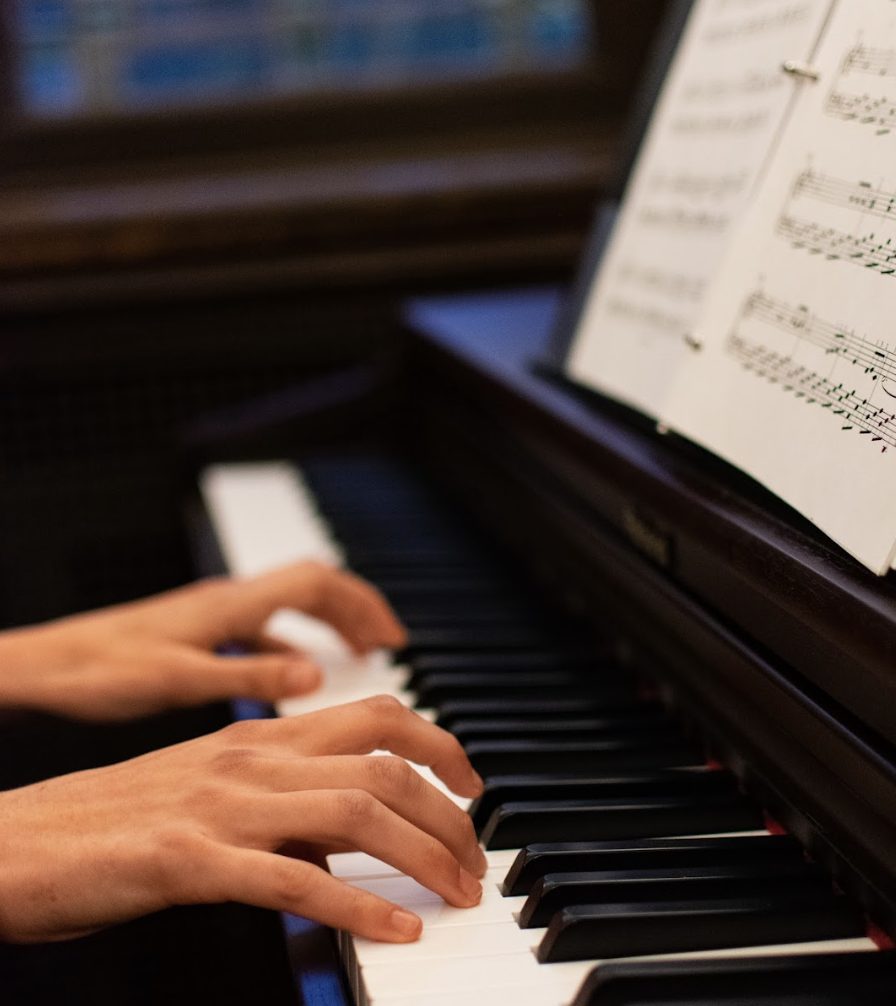By: Katherine Thomas
Ok, she’s awake. Let’s go.
Deep in the heart of Eagle Residence Hall, a music education major opens weary eyes. The birds outside the window wail notes that register in her mind as named pitches.
(Wait, what?)
(She has perfect pitch relative to middle C.)
(Oh word. Carry on.)
On this crisp Tuesday morning, the not-too-elusive creature emerges from the depths of her dorm to breakfast at the DC, then trots off to her first class. At special education, fruitful discussions about teaching take place. “We talk about making an inclusive environment for children of all needs,” Amelia explains.

As TA of the freshman honors chorale, Amelia flaps her arms at some fetal Templetonians around noon every Monday. However, since a new day has dawned, she instead leaps into her sedan (dented from where a deer likewise lept) and screeches off to a nearby elementary school. Here, she observes different musical teaching styles, and how the children receive them. Amelia loves kids, which means this is either a lovely or distressing time for her, depending on the quality of the teacher she observes. It is important for music ed majors to observe like this, that they might pick up practical models of teaching to implement or discard for their future careers.
A brief “break” ensues. No, who am I kidding, this chick never catches a break! After observation hours, Amelia sinks grandly and gracefully to the bench of her electric keyboard, nestled back in the comfort of her room.
Well, actually, not necessarily. Sometimes she treks over to Workman and pours her soul out on the Steinway there. Or, alternatively, she uses this time to swim in the ridiculous pile of honors college work she manages exceptionally well by the grace of God.
(Yeah, when you say exceptional, what are we talking about? You can’t expect too much with everything else you’re talking about…)
(Straight A’s.)
(Carry on.)
Knock, knock, knock. Surprise! It is I! 4 p.m. is upon us, and Amelia and I both must skip to University Choir practice with the fabulous Dr. Perry Brisbon. He tells us to do crazy things like “match the color of your sound” and “sing that ‘e’ with your mouth shaped like an ‘o.’” I think it turns out well. Come to Chapel and find out! We sing there occasionally.
“Farewell!” she bids me before bravely dodging out once more to her next class: instrumental conducting. Here, she practices conducting using a baton. Exams partly consist of identifying instruments by name in Italian, German, English and French. Transposing instruments also comes into play: the sheet music might tell Amelia to play one note, and the pitch coming out of her instrument is another, but it follows the same pattern as the written music.
Surprise, again! It is I – again! 6:30 p.m. strikes. Skip-dee-dee, off to choir practice part two; this time, though, we head to Turning Point rehearsal. At Turning Point, we like to plow through music faster than Dr. Brisbon has anticipated. Amelia sings alto 1 (the higher alto part), and I sing soprano 2 (the lower soprano part). We share many pieces with the University Choir, but also enjoy some of our own.
After reading this account, I know what you might think: this seems like a double major. It essentially is one. I wanted to give you a view of the music department from a student who is studying music with the specific goal of teaching future students. If you would like a final candid quote from this positive (albeit overloaded) student: “Music education is kind of awesome. I am so glad I’m majoring in it!”
